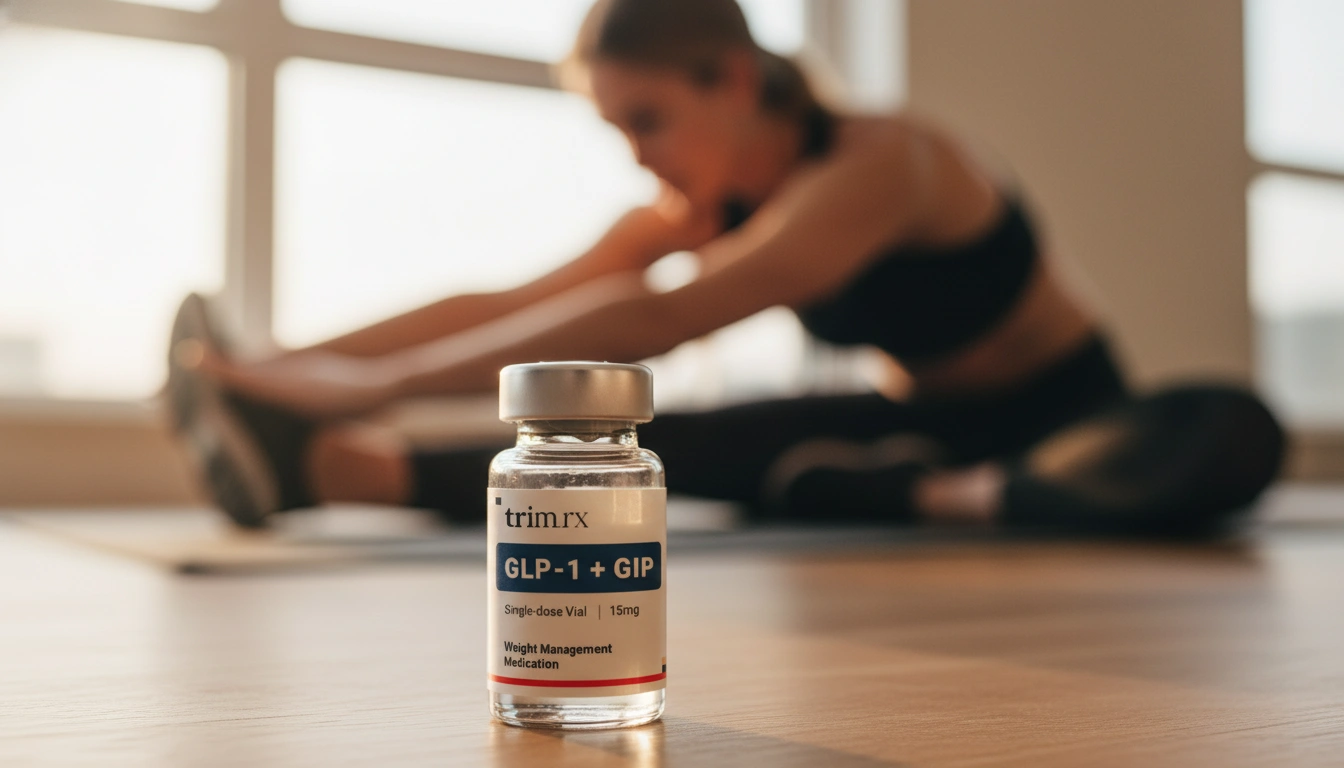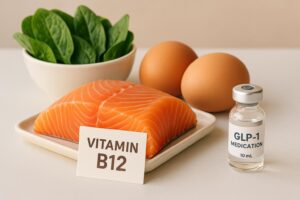Is GLP-1 Naturally Occurring? Exploring Its Role in Weight Management

The human body is a complex system, constantly working to maintain balance and regulate various functions. Among the many hormones that play a crucial role in this process is glucagon-like peptide-1 (GLP-1). It might surprise you to learn that GLP-1 is not just a buzzword among health enthusiasts and medical professionals; it’s a naturally occurring hormone produced in our own intestines. So, what exactly is GLP-1, and why should we care about it? In this blog post, we will dive deep into the world of GLP-1, exploring its natural occurrence, functions, and potential implications for weight management and overall health.
Introduction
Did you know that the average person consumes around 150 grams of carbohydrates daily, which can significantly impact the production of hormones like GLP-1? This fact highlights the intricate relationship between our diet and hormonal regulation. GLP-1 is secreted in response to food intake, specifically when carbohydrates and fats enter the small intestine. As we navigate through the complexities of our weight management journeys, understanding GLP-1’s role becomes increasingly relevant.
At TrimRx, we believe in empowering individuals with knowledge about their bodies and how hormonal dynamics can influence their health. By the end of this post, we aim to clarify whether GLP-1 is naturally occurring, how it functions, and how we can harness its benefits through our dietary choices.
In the sections that follow, we will cover the following key points:
- What is GLP-1?
- How is GLP-1 Produced?
- The Role of GLP-1 in Appetite Regulation
- Dietary Influences on GLP-1 Production
- Medications and GLP-1: The Connection
- Conclusion: Harnessing the Power of GLP-1
- FAQ Section
Let’s embark on this journey together to uncover the fascinating world of GLP-1 and what it means for our health and wellness.
What is GLP-1?
GLP-1, or glucagon-like peptide-1, is a hormone produced by the intestinal L-cells in response to food intake. It plays several vital roles in the body, primarily in regulating blood sugar levels and influencing appetite. As a member of the incretin family of hormones, GLP-1 facilitates insulin secretion from the pancreas when glucose levels rise after a meal. Additionally, it inhibits glucagon secretion, which helps to lower blood sugar levels.
But GLP-1 doesn’t stop there. It also slows gastric emptying, meaning it takes longer for food to move from the stomach to the intestine. This not only helps regulate how quickly glucose is released into the bloodstream but also contributes to feelings of fullness after eating. In essence, GLP-1 is a key player in the delicate balance of hunger and satiety.
How is GLP-1 Produced?
The production of GLP-1 occurs naturally in our bodies, primarily in the intestines. When we consume food, particularly carbohydrates and fats, the L-cells in the intestinal lining detect these nutrients and respond by secreting GLP-1 into the bloodstream. This secretion is part of a complex hormonal response designed to help our bodies manage energy intake and utilization effectively.
Interestingly, GLP-1 has a short half-life, meaning it is rapidly metabolized and inactivated by the enzyme dipeptidyl peptidase IV (DPP-4) shortly after its release. This rapid degradation is why GLP-1 itself does not remain in the bloodstream long enough to have prolonged effects. Instead, it functions almost like a quick signal to the body to initiate insulin release and regulate appetite.
The Role of GLP-1 in Appetite Regulation
Understanding how GLP-1 impacts appetite regulation can provide valuable insights for those looking to manage their weight effectively. After we eat, GLP-1 is released into the bloodstream, where it serves several important functions:
-
Stimulating Insulin Secretion: GLP-1 enhances the pancreas’s ability to produce insulin in response to elevated blood sugar levels, which is crucial for maintaining glucose homeostasis.
-
Inhibiting Glucagon Secretion: By suppressing glucagon release, GLP-1 works to prevent the liver from producing excess glucose, further stabilizing blood sugar levels.
-
Promoting Satiety: GLP-1 acts on the brain to signal feelings of fullness, helping to control appetite and reduce overall food intake. This mechanism is why many people experience decreased hunger and cravings after meals.
-
Slowing Gastric Emptying: By delaying the rate at which food leaves the stomach, GLP-1 helps prolong the feeling of fullness, which can be beneficial for those working towards weight loss.
In essence, GLP-1 plays a critical role in signaling the body to stop eating, making it an important hormone in the management of obesity and metabolic disorders.
Dietary Influences on GLP-1 Production
While GLP-1 is naturally occurring, we can influence its production through our dietary choices. Research has shown that certain foods can enhance GLP-1 secretion and contribute to appetite regulation. Here are some key dietary factors that can boost GLP-1 levels:
High-Fiber Foods
Dietary fiber plays a major role in stimulating GLP-1 release. Foods rich in soluble fiber, such as oats, barley, and legumes, are particularly effective at promoting GLP-1 secretion. When fiber is fermented by gut bacteria, it produces short-chain fatty acids (SCFAs), which further stimulate GLP-1 production.
Protein-Rich Foods
Protein is another critical nutrient for GLP-1 production. Foods like eggs, lean meats, and dairy products not only provide essential amino acids but also trigger GLP-1 secretion, helping to enhance satiety.
Healthy Fats
Incorporating healthy fats into your diet can also support GLP-1 levels. Foods such as avocados, nuts, and olive oil are not only heart-healthy but can also contribute to increased GLP-1 secretion.
Whole Grains
Whole grains are a great source of fiber and can positively impact GLP-1 levels. Including whole grains like brown rice, quinoa, and whole wheat products in your meals can help promote fullness and regulate appetite.
Fruits and Vegetables
Fruits and vegetables are packed with nutrients and fiber, making them essential for a healthy diet. Their consumption can lead to increased GLP-1 production and improved appetite regulation.
By focusing on a diet rich in these foods, we can naturally enhance our body’s production of GLP-1, supporting our weight management goals.
Medications and GLP-1: The Connection
With the increasing popularity of GLP-1 medications such as semaglutide (Ozempic, Wegovy) and tirzepatide (Mounjaro), it’s essential to understand how these drugs relate to the naturally occurring GLP-1 hormone. These medications are designed to mimic the effects of GLP-1, enhancing its action in the body to promote weight loss and improve glycemic control.
-
Mimicking Natural GLP-1: GLP-1 medications bind to the same receptors as the naturally occurring hormone, amplifying its effects on insulin secretion, appetite regulation, and gastric emptying.
-
Prolonged Action: Unlike natural GLP-1, which is rapidly metabolized, these medications have been designed for a longer duration of action, allowing for sustained effects in managing weight and blood sugar levels.
-
Combination Therapy: For those struggling with obesity or type 2 diabetes, GLP-1 medications can be an effective part of a comprehensive treatment plan that also includes lifestyle changes and dietary modifications.
At TrimRx, we recognize the importance of personalized care in weight management. Our approach combines advanced medical science with modern technology, offering a user-friendly platform for individuals seeking effective and safe weight loss solutions. We recommend taking our free assessment quiz to see if you qualify for our prescription weight loss medications, including GLP-1 options that can help you on your journey.
Conclusion: Harnessing the Power of GLP-1
In summary, GLP-1 is indeed a naturally occurring hormone that plays a vital role in regulating appetite, blood sugar levels, and overall metabolic health. By understanding its functions and the dietary factors that influence its production, we can make informed choices that support our health and wellness.
At TrimRx, we are committed to providing personalized, medically supervised weight loss solutions that empower individuals to embrace healthier lifestyles. Our combination of innovative telehealth technologies and compassionate care ensures that every individual receives the support they need on their unique journey.
If you’re interested in enhancing your weight management strategy, consider taking our free assessment quiz to explore if you qualify for our prescription medications or check out our quick-access supplements like GLP-1 Daily Support and Weight Loss Boost, designed to complement your efforts.
FAQ
Is GLP-1 safe?
GLP-1 is a naturally occurring hormone in the body, and medications that mimic its effects have been shown to be safe and effective for weight management and blood sugar control. However, it’s essential to consult with a healthcare provider before starting any new treatment.
Can I increase GLP-1 naturally?
Yes! You can increase GLP-1 levels naturally by consuming a diet rich in fiber, protein, healthy fats, and whole grains. Foods such as oats, avocados, eggs, and legumes are great options.
How long does GLP-1 stay in the body?
GLP-1 has a short half-life and is rapidly metabolized, typically lasting only a few minutes in circulation. This is why medications like semaglutide are used to provide prolonged effects.
What role does GLP-1 have in weight loss?
GLP-1 helps regulate appetite and blood sugar levels, promoting feelings of fullness and reducing food intake, which can lead to weight loss.
Are there any side effects of GLP-1 medications?
While GLP-1 medications can be effective, they may also cause side effects such as nausea, bloating, or gastrointestinal discomfort. It’s essential to discuss these with your healthcare provider.
In conclusion, understanding GLP-1 and its natural occurrence is crucial for anyone interested in effective weight management and overall health. By harnessing the power of this hormone through dietary choices and, if appropriate, medications, we can take significant steps toward achieving our health goals together.

Transforming Lives, One Step at a Time
Keep reading
Vitamin B12 and GLP-1 Medications: What to Know
GLP-1 medications can lower B12 absorption and intake; learn symptoms, food sources, supplement options, and how to monitor levels.
Semaglutide Injection Site Reactions: What To Know
Learn why semaglutide injections can cause redness, swelling or nodules, how to prevent and treat them, and when to seek medical care.
TrimRx vs Friday’s
Compare TrimRx and Friday’s telehealth GLP-1 weight-loss programs: pricing, medical support, coaching, delivery, and which fits your needs.



